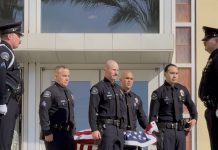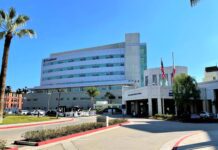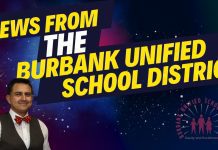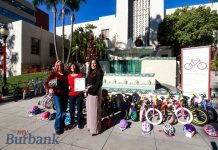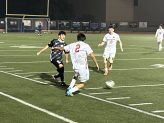Letter to the Editor:
The people of Burbank, and their City Council, are being asked to comment on the environmental impacts of a proposed Bus Rapid Transit (“BRT”) route through the city. This route, proposed by the County Transportation Authority, Metro, would connect existing transit lines in North Hollywood and Pasadena via the Media District, Olive Avenue, downtown Burbank and Glenoaks. Service would be frequent, and buses would take priority using segregated lanes. There would be upgraded facilities for waiting passengers at the limited number of stops.
http://media.metro.net/2020/NoHo-to-Pas-DEIR-0.03-Executive-Summary.pdf
Why is it being built? Metro sees this link as “vital” between the Orange line busway across the San Fernando Valley (now called the G line) and the Gold Line light rail in the San Gabriel Valley (now called the L line). They see a heavily congested 134 corridor and want to do something to provide an alternative. In theory anyway the proposed route connects people to employment centers like the Burbank Media District, as well as to shopping and leisure activities. But they must surely have learned that simply providing a transit line parallel to a freeway (Gold line and 210, Green line and 105) does not guarantee success. It’s really hard to convert car trips to transit.
We must acknowledge that Covid-19 has caused fundamental shifts in the demand for transit, at least in the short term. I think we will see a permanent reduction in commuter trips for office workers as many will have the option to work at least some days from their homes. Thus, whatever studies and projections Metro may have used to justify this investment have been invalidated by this unprecedented external event. It’s time to recalibrate.
What else is driving this project? I noted at the time that tax Measure M was proposed that this project is simply window dressing. Measure M primarily funds the westside subway and the downtown connector. Projects like this BRT or the Van Nuys Blvd. light rail are extremely inefficient uses of funds and are designed to have the appearance of “doing something” for the Valley. Since 1980 we have had four transit taxes (total 2% sales tax), each promising to provide facilities which will make it easier to make the journeys we desire. What has been delivered in Burbank? Our Metro bus services have been reduced, Metrolink is underinvested and cannot compete with the automobile, and BurbankBus, mostly tied to Metrolink connections, is in deep trouble. What we will have soon is a widened freeway that will deliver more traffic onto our streets, more polluted air, and serious disruption during construction. Thank you, Metro.
Construction of the BRT is not set in stone, there is still time to propose alternatives that better meet our needs. Metro’s website notes that construction of the BRT will cost between $253 and $371 million (a huge range!) Annual operations are projected to cost $16 – $18 million. Thanks to Covid Metro is broke. Can we accomplish as much or more for a lot less money?
I would start from the viewpoint that a single fixed route is not the answer. There was much debate as to whether the route should serve the airport or the Media District. Why not do both? My proposal is for a tri-city agency to combine Burbank, Glendale, and Pasadena city buses (“BGP”). In addition to taking over the existing local routes in each city, and effecting operational and administrative savings, BGP would initiate new routes that connected the three cities. For a fraction of the cost of the BRT, these new routes would represent better value for money. They would connect the transit centers, employment, and leisure sites with multiple options instead of one size fits all. The new organization would be flexible enough to change or eliminate a route if it does not perform. Best of all, we would have more local control, and be free of the dead hand of Metro, which has shown itself to be completely unresponsive to the City and unwilling to cooperate with BurbankBus.
Paul Dyson is a past chair of the Burbank Transportation Commission and a lifelong advocate of public transit.
Paul Dyson









